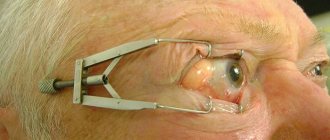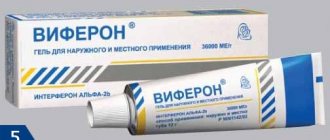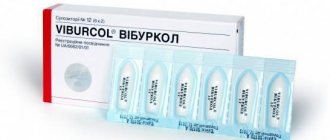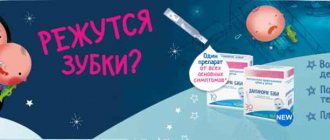Children more often than other patients suffer from infectious pathologies. This is due to the fact that their immune system has not yet been formed. The therapeutic regimen includes universal medications. The most popular are Viferon and Viburkol. These drugs belong to different pharmacological groups.
Viferon is an immunomodulatory drug characterized by antiviral and antiproliferative properties. Viferon is based on human recombinant interferon alpha-2b. This component prevents the replication of the pathogenic virus and accelerates the regeneration of damaged cells. The medication is characterized by the absence of age restrictions. It is allowed to be given even to newborns and infants. This is due to the relative safety of this drug.
Viburkol is an effective medicine of natural origin. It has a positive effect on the patient's body. The drug consists of plant extracts.
It is used for nasal congestion, ARVI, teething, hyperthermia. The safety profile of Viburkol has been fully studied. The medication has immunostimulating, antitumor, antiviral and antiherpetic effects.
Indications for use
Viburkol is used to cleanse the body of toxic substances and stimulate active immunity. These suppositories, like Viferon, are characterized by analgesic properties.
These medications help improve the functioning of the central nervous system. Viburkol is used as an antipyretic for infectious pathologies. The drug quickly eliminates:
- catarrhal phenomena;
- cramps in the stomach;
- sleep problems;
- unreasonable anxiety;
- fever;
- intestinal colic.
Viburkol is often included in the therapeutic regimen for influenza, mumps and chickenpox.
Viferon is prescribed if the child has a history of the following diseases:
- Acute viral infections.
- Infectious and inflammatory pathologies of the excretory system.
- Meningitis, intrauterine infection, blood poisoning.
Can Viferon be used by children?
Viferon suppositories can be used by children of different ages. Doses of medication for infection in newborns and premature infants:
- Prematures with a gestational age of more than 34 weeks, 150,000 IU twice a day. The interval between doses is 12 hours. The duration of course therapy is 5 days.
- Premature babies less than 34 weeks - 150,000 IU three times a day (every 8 hours) for 5 days.
Children under 7 years of age with ARVI are also advised to take Viferon 150,000 IU twice a day. Course therapy lasts up to 5 days. If treatment is ineffective, you should see a pediatrician.
The number of courses of treatment may vary depending on the type of disease:
- flu - 1-2,
- cytomegalovirus infection - 2-3,
- enterovirus infection - 2-3,
- pneumonia (as a complication after a viral infection) - 1-2,
- herpes - 2.
The number of courses is determined by the doctor. The interval between them is 5-6 days.
According to research, with coronavirus, children under 7 years of age can be prescribed up to 1,000,000 IU 2 times a day. And for children over 8 years old, up to 3,000,000 IU twice a day. The duration of therapy is 7-14 days, depending on the severity of the pathology. Treatment with high doses allows you to quickly remove the pathogen from the body.
For viral hepatitis B, C, D, it is recommended to prescribe Viferon suppositories:
- Under 6 months of age: 3,000,000-5,000,000 IU per day;
- Up to 12 months of age: 5,000,000 IU per day;
- 1-7 years: 3,000,000 per 1 square meter of body surface area per day;
- Over 7 years of age - 5,000,000 IU per 1 square meter of body surface area per day.
In the first 1.5 weeks of therapy, the medicine is taken twice a day. Next, candles are placed every other day for six months to a year.
Contraindications
Viburcol is strictly prohibited for use if you are hypersensitive to the ingredients of the medicinal composition. During pregnancy, the drug is not recommended for use without doctor's prescription. The same goes for women who are breastfeeding. Viburkol is allowed to be taken together with other antiviral medications. The risk of negative consequences is minimal.
In this respect, Viferon differs significantly from Viburkol. It can provoke the development of negative clinical manifestations. The medication should be avoided by patients suffering from the following pathologies:
- hypersensitivity;
- chronic hepatitis;
- cardiovascular diseases;
- disruptions in the functioning of the nervous system;
- partial dysfunction of the kidneys and liver;
- epilepsy.
Taking Viferon is contraindicated for minors, pregnant women, and nursing mothers. The drug should not be included in the drug regimen together with immunosuppressants.
The main differences between the drugs
Medicines are characterized by a similar spectrum of action. The difference between Viburkol and Viferon lies in the composition, list of side effects and release forms. Viburkol is sold only in the form of rectal suppositories, while Viferon can be purchased in several varieties. The choice is made based on the nature of the pathological changes.
Suppositories are available in white, may have a yellowish tint and have a torpid shape. The diameter of the candle does not exceed 10 mm. The ointment is most often used topically. It is characterized by a homogeneous structure and a rather specific aroma. Viferon gel has a uniform and opaque concentration, as well as a grayish tint.
Viburkol is classified as a complex type of homeopathic medicine, and Viferon is classified as an immunomodulatory medicine of synthetic origin. Such drugs reduce the load on the liver. Viburkol gradually reduces body temperature without affecting the process of interferon activation, thanks to its antispasmodic and sedative properties.
Scheme for using the drug VIFERON Ointment (short version)
| Child's age | Dosage | Frequency of application |
| from 1 year to 2 years | 2500 IU (1 pea with a diameter of 0.5 cm) | 3 times a day |
| from 2 to 12 years | 2500 IU (1 pea with a diameter of 0.5 cm) | 4 times a day |
| from 12 to 18 years old | 5000 IU (1 pea with a diameter of 1 cm) | 4 times a day |
VIFERON Ointment can be used to treat ARVI and influenza in children over 1 year of age . To treat influenza and other acute respiratory viral infections, the ointment is applied in a thin layer to the mucous membrane of the nasal passages for 5 days.
Which drug to choose
The medication is chosen taking into account the diagnosis, stage and individual characteristics of the patient. The selection of the drug should be carried out by the attending physician. Interferon alpha-2b, which is part of Viferon, is obtained by hybridizing the genome of white blood cells and bacterial plasmids. Protein compounds are characterized by high solubility.
The reasons for using Viburkol are:
- complex treatment of ARVI;
- nervous overexcitation;
- uncomplicated infections;
- inflammatory process in the ENT organs;
- pathologies of the excretory or reproductive systems.
If side effects occur, you should immediately consult a doctor.
He will reduce the daily dose of the medication or replace it with an analogue. The procedure depends on the intensity of clinical manifestations.
In what cases is Viferon used?
Viferon is used in complex therapy of acute respiratory diseases, incl. flu; for disorders of the nervous system. The drug is an immunomodulator, increasing the level of human immunity. In childhood, Viferon is allowed for use from the first days of life, during pregnancy (from 14 weeks), and can be used during breastfeeding.
The use of Viferon from the first days of the disease significantly accelerates the patient’s recovery process.
Advantages of suppositories:
- mild effect on the body;
- no side effects;
- do not contain preservatives or dyes, which is the optimal solution for treating young patients and children with allergies;
- convenient form of administration.
Viferon is prescribed for the treatment of acute respiratory viral infections in adults and children . Its active ingredient is interferon. Auxiliary components, ascorbic acid and vitamin E, help reduce inflammation and rapid regeneration of damaged cells. Viferon suppositories for children vary depending on the amount of active ingredient. The selection of a treatment regimen and the choice of drug is carried out by the doctor on an individual basis.
Is it possible to take Viburkol together with Viferon? The action of the first drug is anti-inflammatory; it is used to reduce temperature in various types of febrile conditions. Viferon fights viruses that have entered the body. Therefore, it is possible, but with an interval of at least 30 minutes.
In addition, Viferon can be used not only during the acute phase of the disease, but also at the prevention stage during the cold season, providing a pronounced antiviral effect.
If we compare Viferon with Viburkol, both drugs are safe for use, which is why they are widely used in the treatment of colds in children.
Active Ingredients
Viburkol is a homeopathic remedy. It contains extracts of the following plants:
- pharmaceutical chamomile;
- meadow lumbago;
- belladonna;
- plantain;
- nightshade.
Healing extracts are combined with solid fat and calcium carbonate. All of these components are characterized by relative safety.
Viferon contains recombinant alpha-2b. This component is the main one, it is supplemented with auxiliary ingredients. Suppositories include fat, cocoa butter, ascorbic acid, polysorbate 80, sodium ascorbate.
The external gel also contains alpha-tocopherol acetate. In addition to this, the following is added to the drug:
- purified water;
- ethanol;
- benzoic acid;
- citric acid monohydrate;
- distilled glycerin;
- sodium tetraborate decahydrate;
- sodium chloride.
The main ingredient is characterized by a wide spectrum of action and the ability to suppress the replication of DNA and RNA viruses. Thanks to interferon, it increases the cytotoxicity of white blood cells and activates antibacterial protection.
Alpha-tocopherol acetate and vitamin C have antioxidant, restorative, membrane-stabilizing and anti-inflammatory effects. Cocoa butter, which together with confectionery fat provides structure, contains phospholipids and polyunsaturated fatty acids.
Antipyretic and VIFERON - faithful assistants to the doctor and patient
Quite often, fever accompanies acute respiratory viral infections. According to many, to combat ARVI, taking a medicine that lowers the temperature is enough. And after this, you can not miss work the next day, and the child will go to kindergarten or school, because in most cases the main unpleasant symptom in the form of fever can be eliminated by taking several antipyretic tablets. Not everyone knows that when fighting colds and flu, lowering body temperature alone is not enough; antiviral therapy is also necessary.
Stopping the division and multiplication of the virus, as well as increasing immunity, allows the use of antiviral rather than antipyretic drugs. One of these drugs is the broad-spectrum complex antiviral immunomodulatory drug VIFERON for children and adults. It has a double effect - it helps block the virus and restore immunity. The original formula of the drug is a combination of interferon alpha-2b and highly active antioxidants (vitamins C and E). The drug is available in the form of suppositories, ointments and gels. It belongs to the group of cytokines and has a universal effect against a wide range of viruses and other pathogens.
VIFERON helps fight infection at any stage of the disease. The drug provides a powerful antiviral effect and allows you to shorten the overall duration of the disease, quickly cope with the manifestations of infection (runny nose, cough, weakness, fever, etc.), and also reduces the likelihood of developing complications and subsequent diseases. 1
If necessary, you can take VIFERON and an antipyretic (antipyretic) together.
Principles of application
Viburkol is a homeopathic medicine and is quite popular among the population. They do not cause dependence, withdrawal symptoms or addiction. Suppositories normalize the functioning of the digestive system, eliminate spasms and problems with gas formation. The course of treatment can last for 10 days, including when treating newborns. It is recommended to take the suppositories at night, this will enhance the positive effects. The drug can be used to relieve unpleasant symptoms after immunization. The dosage and order of administration are determined by the doctor. It is strictly prohibited to prescribe a therapeutic regimen on your own.
Viferon ointment is approved for use to eliminate herpetic lesions and catarrhal symptoms in children over 1 year old. The gel is prescribed for preventive and therapeutic purposes. Suppositories are used as an aid in the treatment of infectious pathologies, generalized myeloma, hairy cell leukemia and bladder cancer. Basal cell carcinoma, condylomatosis acuminata, meningeal form of tick-borne encephalitis, and Sézary syndrome are added to this list. The therapeutic course is carried out in full accordance with the doctor’s instructions. The treatment regimen is selected taking into account the nature of the clinical manifestations, general well-being and individual characteristics of the patient.
The most pressing problem in Russia is pharmacotherapy in pediatric practice. Today, medications are widely used that are either not officially approved for use in children (unlicensed), or are not used in accordance with the instructions for use of the drug (off label), or a large number of medications are used at the same time (polypharmacy), especially those that do not have proven effectiveness. in children. Unregulated prescriptions often account for about 10% when treating a child in an outpatient setting. More than a third of adverse drug side effects occurring in pediatrics are caused by unlicensed or off-label prescriptions [1].
Over-the-counter dispensing of such groups of drugs as non-steroidal anti-inflammatory drugs (NSAIDs) and antibiotics leads to an increase in side effects in children (data from a systematic review of RMD RM Smyth et al., 2012) [2].
The peculiarities of prescribing drugs in children are due to the different pharmacokinetics of drugs, ranging from the absorption of the active substance in the child’s gastrointestinal tract, the connection with proteins due to a different composition of protein fractions, and ending with the immaturity of the child’s excretory system [3].
Thus, unregulated pharmacotherapy is often accompanied by an increased risk of complications and can lead to prolongation of the underlying disease.
The problem of off-label prescriptions is most clearly presented in the treatment of acute respiratory diseases, spastic conditions, and pain syndromes, since to alleviate the suffering of a child, higher doses, different frequency of prescriptions, combinations with other NSAIDs not approved for use in children, and additional prescription of such drugs are often used. drugs such as antihistamines, myotropic, immunomodulatory, sedatives, on the one hand, capable of quickly and effectively stopping almost any symptom, on the other hand, blocking and inhibiting the physiological course of biologically expedient processes of self-regulation of the body.
For example, the use of NSAIDs leads to inhibition of the inflammatory process, which disrupts its physiological course and makes it difficult to fully complete it. Therefore, long-term use of NSAIDs during acute and subacute course of the disease can contribute to chronicity of the process, as well as the development of various complications.
Today, naturopathic treatment is becoming increasingly popular in the world. In European countries, especially Germany, homeopathic remedies have been officially prescribed by traditional practitioners for more than 80 years [4].
The drug Viburkol (Biologische Heilmittel Heel GmbH, Heel) is widely used for diseases in children by both foreign and domestic doctors [5, 6, 8–19, 20]. Viburkol belongs to antihomotoxic drugs, the action of which is based on the complementary principle and stimulation of the body’s own forces. Antihomotoxic drugs are made from natural products in minimal dosages, they are prescribed on the basis of a clinical diagnosis, the complex composition allows them to be used according to indications, making the drugs available for use by doctors who do not have special homeopathic training.
To reduce the use of high doses of NSAIDs and the prescription of several drugs with questionable effectiveness, it is possible to use low-dose complex antihomotoxic drugs in children. For example, the drug Viburkol has certain advantages: firstly, it provides a quick and pronounced effect comparable to NSAIDs; secondly, it has minimal side effects; thirdly, it has a convenient registered dosage form for children and is used from the age of one year; compatible with other complex biological and allopathic drugs, when used together with which their side effects are minimized. At the same time, Viburcol has a favorable safety and tolerability profile [5, 6, 7–16].
Currently, in Russia, the drug Viburkol is registered in the form of a pediatric form “Homeopathic rectal suppositories” (see table). It consists of six components (five plant and one mineral), which, thanks to a special stepwise homeopathic manufacturing technology, are contained in the preparation in ultra-low doses. It is thanks to its composition that Viburkol is well tolerated by children and, unlike traditional allopathic drugs, helps restore self-regulation processes in the body, activate detoxification processes and normalize impaired functions [5, 6, 7–19]. Chamomilla recutita (officinalis chamomile), which is part of the drug, increases the threshold for pain perception and restores autonomic regulation in the body. It is used for nervous excitement in children due to fever, teething, and intestinal colic. Chamomile is effective for pain in children associated with hypersensitivity and physiological immaturity of the nervous system. Belladonna (belladonna) enhances the effect of Chamomilla recutita and is a basic component for the treatment of pain in children. Dulcamara (bittersweet nightshade) provides a tranquilizing effect. Plantago major (large plantain) has a sedative effect. Pulsatilla (anemone) normalizes hormonal balance and is also one of the most effective homeopathic ingredients for pain relief. Calcium carbonicum has a pronounced analgesic effect [5–7].
Thanks to these components, Viburkol has a complex effect: analgesic, antispasmodic, sedative, anti-inflammatory. A special feature of the drug is that its use in diseases with fever is not accompanied by a sharp decrease in body temperature, the drug does not affect the metabolism of arachidonic acid. This is due to the fact that its complex action is based on the activation of the body’s defense mechanisms and contributes to a biologically expedient reduction in elevated body temperature, maintaining it at an optimal level that preserves the effective functioning of the immune system: interferon synthesis, activation of phagocytosis [6–8].
Thanks to this complex action, the indications for use of Viburkol cover a wide range of diseases and conditions in children. These are inflammatory processes with pain during teething, otitis [5], infectious diseases (acute respiratory viral infections - ARVI, influenza), acute diseases of the upper respiratory tract, childhood infectious diseases (chicken pox, measles, rubella) accompanied by fever [5, 12–15], spastic conditions (intestinal colic) [15], nervous agitation, anxiety against the background of elevated body temperature [6, 10, 15, 16, 18, 20], as well as prevention of convulsive readiness against the background of increased body temperature.
However, it must be remembered that in Russia this drug is registered only “as part of complex therapy (as an antipyretic and anti-inflammatory agent) in the treatment of respiratory diseases in children, as well as for the relief of clinical manifestations during the eruption of baby teeth” [21].
Dosage regimen recommended by the instructions: for ARVI and painful symptoms of eruption of baby teeth, children under 6 months, 1 suppository 2 times a day, children over 6 months with a body temperature above 37.5 ° C, 1 suppository 4 times a day, with a body temperature above 38°C 1 suppository up to 6 times a day. When body temperature normalizes, take 1 suppository 1–2 times a day for another 3–4 days [21].
The effectiveness and good tolerability of Viburkol for the above diseases and conditions have been studied and confirmed by a number of scientific and clinical studies since the 1980s. The results of a study of the drug Viburkol were first published in 1986. Treatment was carried out in a group of 44 children under the age of 2 years who suffered from an uncomplicated viral upper respiratory tract infection.
The study noted the effectiveness of the therapy; no side effects were observed [22].
A study of Viburkol suppositories was also conducted in 3009 children under 1 year of age who suffered from acute respiratory diseases (2173 children), restlessness due to fever (341 children), abdominal cramps (127 children), pain (291 children) and other symptoms (77 children). During treatment, the drug was prescribed in the form of suppositories 2-3 times a day to 71.3% of patients. With the therapy, recovery occurred in less than a week in 56.5% of patients. In the cohort of sick children, 82.7% of patients rated the effect as “very good” or “good.” Only 4.6% of children showed no improvement, and 0.5% experienced deterioration. Of the side effects, 9 cases of diarrhea were described, 2 patients noted pain when administering the suppository [23].
A study of Viburkol was also conducted for general anxiety against the background of fever, acute respiratory diseases and teething in 30 children. A positive effect was achieved in 25 children. No side effects were recorded [24].
German specialists B. Müller-Krampe, R. Gottwald, M. Weiser in 2002 conducted a multicenter prospective controlled cohort study in which they compared the effectiveness and tolerability of Viburkol and paracetamol in the symptomatic treatment of acute febrile conditions in children.
The study included 767 patients; the main group (361) took Viburkol, the control group (406) took paracetamol. The danger of using paracetamol is associated with the narrow range between therapeutic and toxic doses. Due to the over-the-counter status of paracetamol, there is a high risk of overdose during self-medication, which can cause severe side effects. Therefore, Viburkol was chosen for comparison as a drug that helps eliminate specific symptoms without pronounced toxic effects. The criteria for effectiveness and tolerability were body temperature, feeling sick, severity of fever, severity of clinical symptoms (spasms caused by infection and temperature, general anxiety and sleep disturbance, screaming/crying, difficulty eating/drinking, time of improvement of feverish symptoms), overall treatment outcome, side effects and overall assessment of tolerability. As a result of treatment, a marked improvement in clinical parameters was observed in both groups. The following conclusions were drawn: Viburkol is a reliable, effective and safe drug for the symptomatic treatment of diseases accompanied by fever in children. At the same time, it has a therapeutic potential comparable to paracetamol and its use does not pose the risk of developing side effects characteristic of paracetamol [15].
In 2005, Belgian clinicians led by M. Derasse compared the effectiveness and tolerability of the drug Viburcol with paracetamol in febrile conditions [16].
The study involved 208 children (under 11 years of age) from 38 medical centers in Belgium. The main group (107) of patients took Viburcol for rhinitis, otitis, bronchitis and tonsillitis [16]. It was concluded that Viburkol is well tolerated and is not inferior in effectiveness to paracetamol. Doctors and parents were more likely to rate Viburcol "excellent" (93%) than acetaminophen (80%). The study showed that for clinicians and parents concerned about the possible risks of treatment, Viburkol is an effective, well-tolerated alternative to paracetamol in the symptomatic treatment of children with acute infection accompanied by fever [16].
In conclusion, I would like to note that Viburkol is an effective registered drug that has undergone clinical trials not only in Russia, but also abroad, with a well-studied tolerability and safety profile. The use of Viburkol in addition to standard therapy for acute respiratory infections accompanied by fever, pain associated with teething or respiratory infection leads to a reduction in the risk of developing side effects as a result of taking NSAIDs, reduces the number of drugs used simultaneously, and reduces the likelihood of using off-label drugs.
Side effects
If Viburkol is used incorrectly, the clinical picture may include symptoms such as itching, rashes on the skin, and increased body temperature. These signs may be caused by individual intolerance to the drug composition. The risk of unpleasant manifestations is quite small. Despite its relative safety, the drug is not recommended to be taken without consulting a doctor. Viferon can provoke the development of an allergic reaction. Its symptoms disappear 3 days after stopping the use of the medication. It combines well with other medications.
If the patient has contraindications to the use of Viburkol, the doctor may prescribe the following analogues:
- Ibuprofen;
- Calpol;
- Rapidol;
- Cefekon;
- Nurofen;
- Paracetamol.
Viferon is replaced by Interferon, Laferobion, Laferomax, Jenferon and Nazoferon. Each of these medications has its own positive and negative properties, so an analogue must be selected by a doctor.











